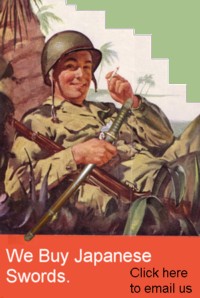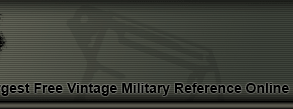The Japanese SAMURAI SWORD TANG -
This page is dedicated to the study of the Samurai Sword blade tang. The different aspects of its construction are
discussed here. Several photos and drawings are provided to facilitate its understanding.
This information is brought to you courtesy of
MilitaryItems.com .
The provider of military antiques and collectibles on the web.
The tang is the end of the blade opposite to the point. Its promary function is to provide a place where the handle of the
sword can be attached. The tang of the Samurai sword contains a good amount of information regarding the date, swordsmith,
school/village and construction of the blade. It is important to note that not all of this information may be found at one
time in every blade. Some tangs will contain less information than others.
TANG SHAPES (NAKAGO)
The tangs of the Samurai swords came in a variety of shapes. The following photographs feature some of the shapes. It is
important to note that these are not all of the shapes that existed. The Japanese term to describe the shape is Nakago.
The following section shows pictures of the tangs and also provides a graphical interpretation as a means to provide a
different way in which to look at the shape of the tang.
THE TANG FILING MARKS (YASURIME)
Another distinguishing factor found on various Samurai sword tangs are the filing marks. These consists of a series of straight
lines that were applied by the swordsmith by using a file on the surface of the tang. The Japanese term used to describe the
markings is Yasurime.
The following pictures and graphics illustrate the different types of tang file markings. Where available a photograph of the
markings is provided. It is important to notice that the patterns shown here may not be all of the ones that were available but
are the most commonly found.
|
This page is dedicated to the study of the Samurai Sword tang. The different aspects of its construction are
discussed here. Several photos and drawings are provided to facilitate its understanding.
One of the most commonly asked questions is "How much is my Japanese sword worth?".
A price guide is available and can be seen by visiting our
Samurai Swords section.
A trend can be observed. The present worth of the items in the collector's market is illustrated.
This service is provided free of charge to the visitor/enthusiast courtesy of
MilitaryItems.com,
a company dedicated
to the preservation of military history and to providing quality military antiques and
collectibles to museums, institutions and the general public.
|
|
THE TANG - TIP SHAPE
The tang of the Samurai sword comes in a variety of shapes. Some of these were created by the swordsmith as a trademark.
Others are the result of the shortening of a blade. The shape of the tang is known as "Nakago-Jiri".
The following photos illustrate some of the different shapes of Nakago found on the swords.

|
WE BUY JAPANESE SWORDS - All types of Japanese edge weapons. Whether it is a WWII era Samurai sword or an
older type of blade.
The process gets started by you sending us an
Email .
We will respond to your inquiry normally within 24 hours and in many cases much faster.
We can tell you what you have, what it is worth and how much we can pay you.
One sword or an entire collection -
Email Us .
|
 |
If you would like to learn more about Samurai swords you may visit our section titled:
Samurai Sword page
|





